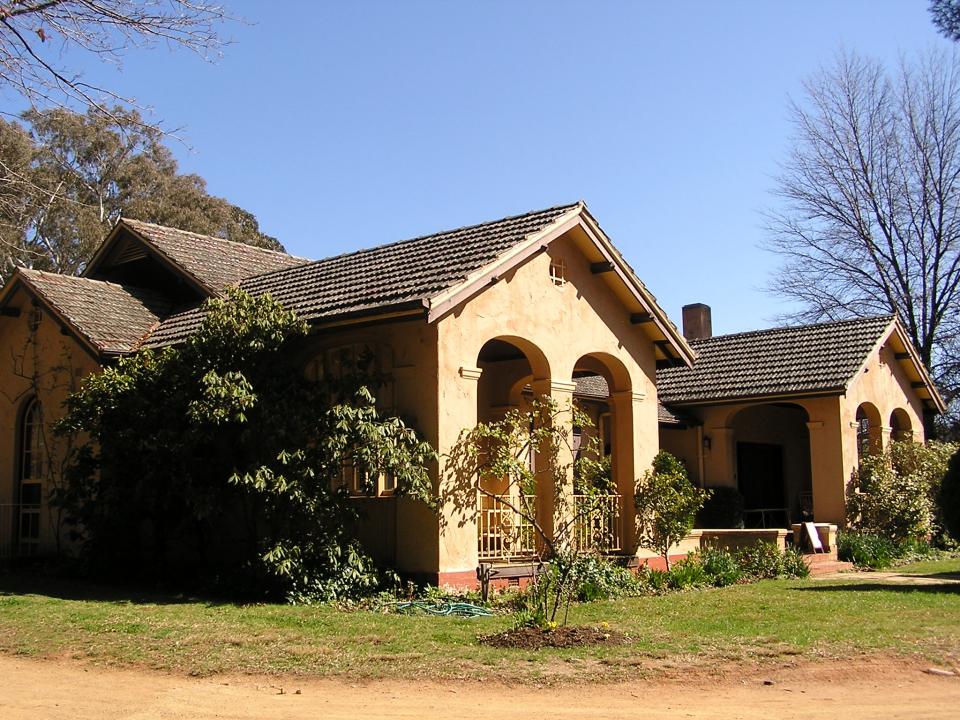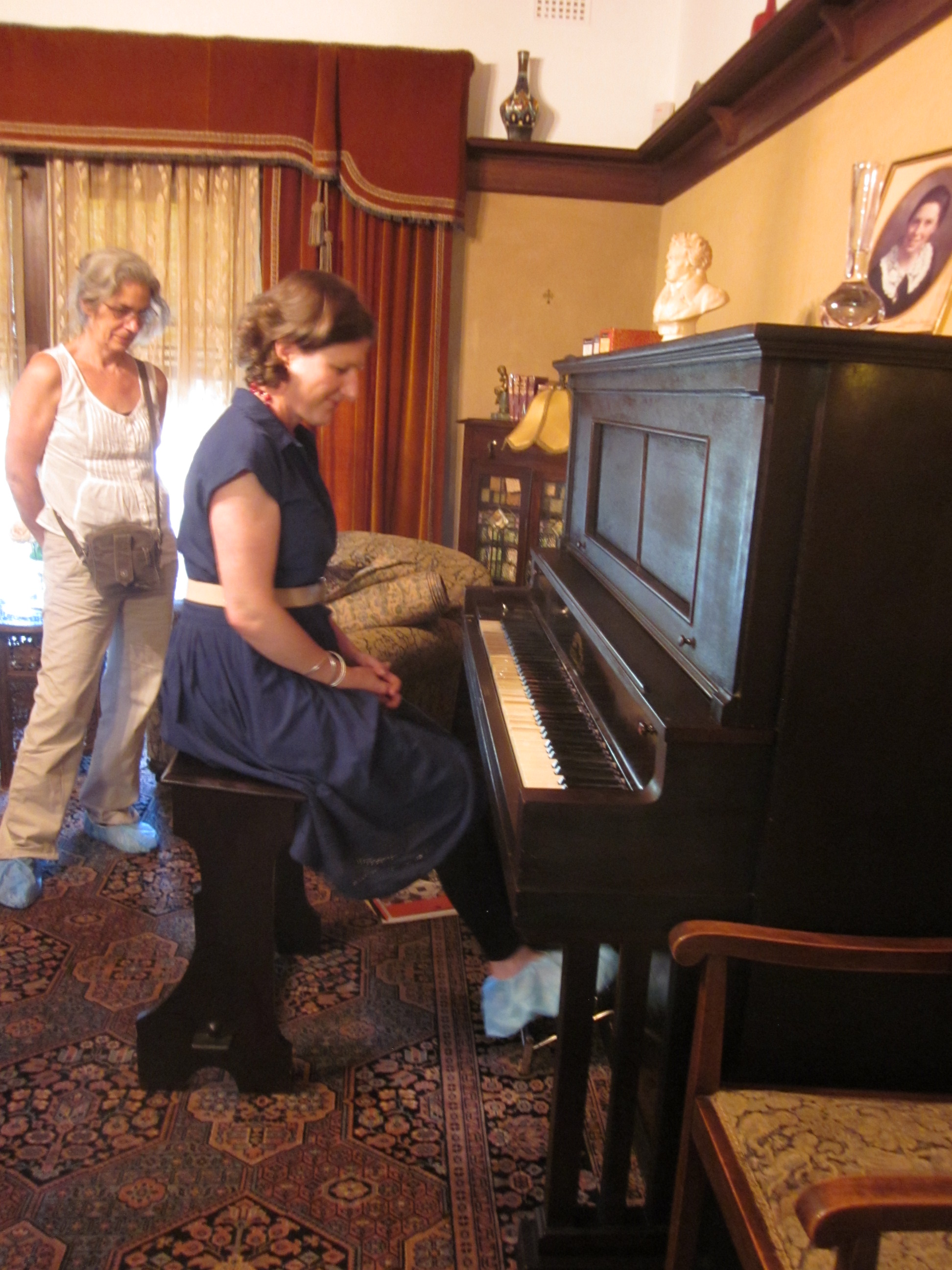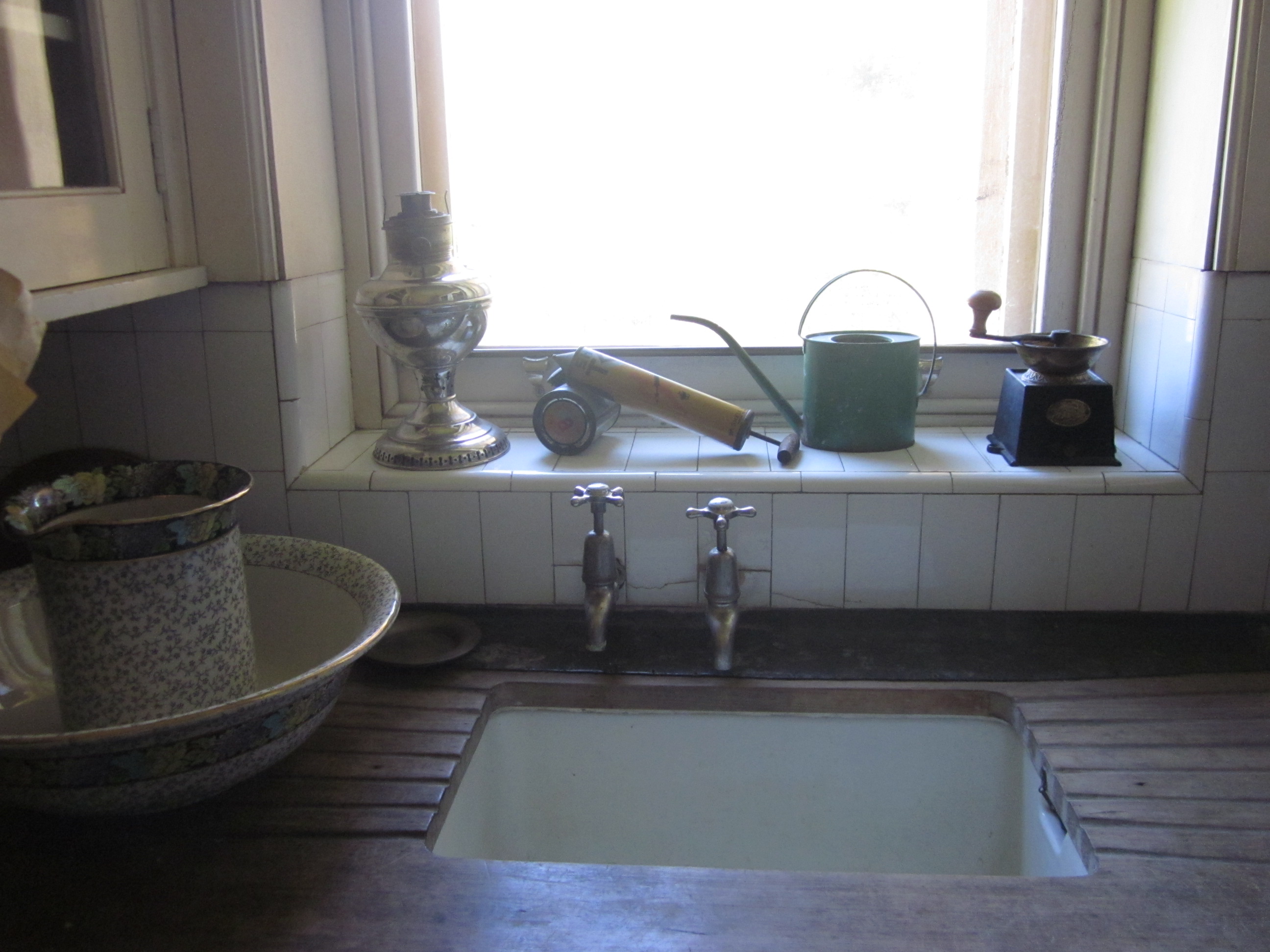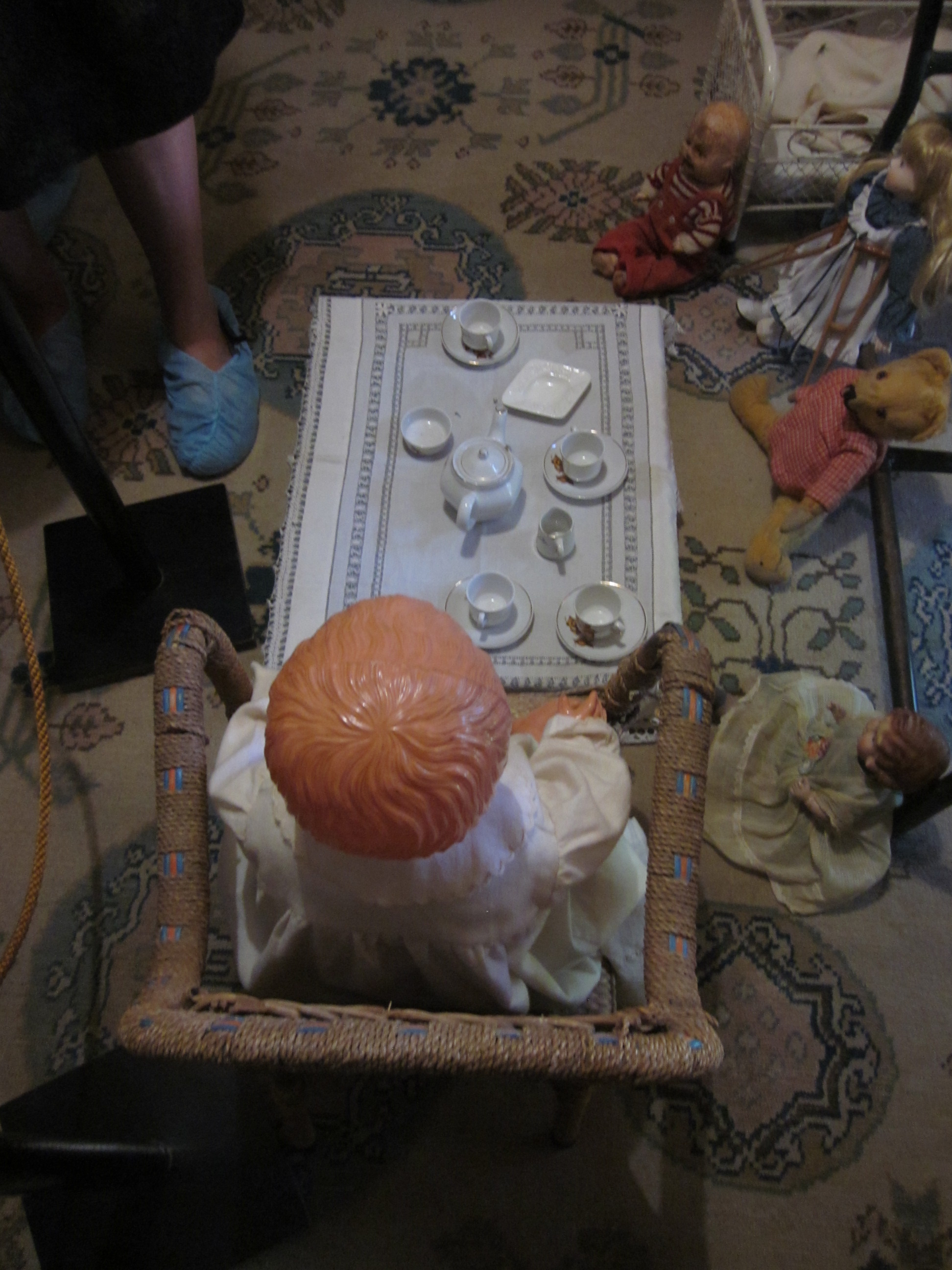
Calthorpes' House
The house and collections
Calthorpes’ House is the newest of the ACT house museums. It was built in 1927 for Harry Calthorpe (auctioneer and stock judge) and his wife Dell. The Calthorpes chose the architects Oakley and Parkes to design their home, the same firm that had won a national competition to design suitable houses for the Federal Capital, and had also designed the Prime Minister’s residence, the Lodge. The house was designed for the hot, dry Canberra summers and to correspond with the Garden City ideal of a free-standing cottage set within a large garden. Like many Canberra houses of this period it has a roughcast exterior finish painted in earthy colours, a tiled roof with shingled gables, arched verandahs and shuttered windows. The Calthorpes moved from Queaneybean to the new house in Red Hill with two small daughters, Del and Dawn, and their maid Agnes. Del and Dawn married during WWII, and in 1950, Harry, a WWI veteran, died at the age of 59. Mrs Calthorpe lived in the house until just before her death in 1979. In 1984, her family sold the house to the ACT Government to be preserved as a house museum for future generations. The house represents fashionable style and taste of the 1920s, including household furnishings and appliances; the design, with its passageways and hallways, reflects the architect’s intention to create separate physical and social distances between the different occupants of the house.
Music at Calthorpes' House
There are substantial oral history interviews with Dawn Waterhouse, née Calthorpe, to aid in reconstructing the musical life of Calthorpes' House. The house repertoire comprises musical tuition books used by the girls and a large collection of popular songs, as well as a substantial collection of pianola rolls which were a favourite part of the household music making. Dawn describes how she and her sister gave a concert soon after moving into the new house, using the sitting room as stage and the dining room doors as the curtain between the stage and the audience, who were seated in the dining room:
 "Dell sees to it that we have music of one sort or another: piano, gramophone or piano. Mother loves Moonlight Sonata or a Chopin waltz. I love ‘Knee Deep in daisies’….Our theme song is Always. Pop gives renditions of songs he performed on his youth, excerpts from ‘Our Miss Gibbs’, ‘Chu Chin Chow’, the Cobblers’, ’Prisoners’ Veterans’ Song’ His voice is strong and rich. Pop says a song is a blessing and should be exercised with the same zest as magpies do. We all love the pianola rolls and can sing the entire “Rose Marie” pianola roll without looking. We swoon on ‘Shine on Harvest Moon’. Del plays ‘Trees’ and we try to harmonise the last bars. Pop and mother show us how they vamp on the piano or dance to the Destiny Waltz..."
"Dell sees to it that we have music of one sort or another: piano, gramophone or piano. Mother loves Moonlight Sonata or a Chopin waltz. I love ‘Knee Deep in daisies’….Our theme song is Always. Pop gives renditions of songs he performed on his youth, excerpts from ‘Our Miss Gibbs’, ‘Chu Chin Chow’, the Cobblers’, ’Prisoners’ Veterans’ Song’ His voice is strong and rich. Pop says a song is a blessing and should be exercised with the same zest as magpies do. We all love the pianola rolls and can sing the entire “Rose Marie” pianola roll without looking. We swoon on ‘Shine on Harvest Moon’. Del plays ‘Trees’ and we try to harmonise the last bars. Pop and mother show us how they vamp on the piano or dance to the Destiny Waltz..."
Owners' names written on particular pieces and physical signs of wear indicating well-used items in the sheet music collection substantiate these recollections.
Interpretation
Dr Jennifer Gall's research has included experiments with how musical sound was generated in different precincts of the house and investigation of how sound and music would travel between zones: for example, testing how much might be heard in the living room and bedrooms of the maid going about her duties in the scullery or laundry, singing to herself, and what kind of volume of the pianola would be heard in the children’s’ bedrooms. Audiences at house concerts experience this ‘sound spill’ physically.
She has also been interested to try and record the sounds of household appliances that would have accompanied singing during household tasks and cooking. These recordings create a sense of how musical sounds would cross the physical household boundaries and their accompanying social distinctions so that musically interested listeners could absorb material from both sides of the class system. As Emily Thompson puts it in The Sound Scape of Modernity, "a soundscape’s cultural aspects incorporate scientific and aesthetic ways of listening, a listener’s relationship to their environment, and the social circumstances that dictate who gets to hear what."
Events
- Demonstration of the Pianola is integrated into tours of Calthorpes’ House, School visits and School Holiday programs.
- A special School Holiday programme in April 2015 was curated as part of Listening to the Past around the music and games associated with a 1920's children’s birthday party. Activities included Musical Chairs, Pass the Parcel and sing-alongs of Calthorpes’ family favourites such as ‘Teddy Bear’s Picnic’.

